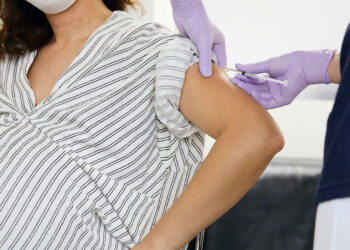The resurgence of measles in the US highlights the importance of early identification to prevent outbreaks, and more medical educators are taking proactive approaches to prepare students and current clinicians for real-world management.
“Given the rising number of measles cases nationally and globally, largely driven by falling vaccination rates and pandemic-related disruptions of global migration, Rush clinicians recognized an urgent need to better prepare future clinicians,” said Nicholas Cozzi, MD, EMS medical director at Rush University Medical Center, Chicago, in an interview. “We wanted to ensure our medical students could identify classic features of measles but also recognize how rashes may appear differently across diverse skin tones,” he said. Early recognition of measles by all healthcare providers is critical to help prevent further transmission and reduce complications, he added.
The current initiative to introduce medical students to measles presentations across skin types was prompted by the spike in measles cases in Chicago in 2024, Cozzi said. The program involves artificial intelligence and learning models to provide examples of varying rash presentations.
“Our goal was, and is, to prepare emergency clinicians of tomorrow to be prepared to care for rashes that were once forgotten,” he explained. The dedicated and intentional learning of rashes has been added to the broader curriculum, said Cozzi. “By emphasizing dermatologic presentations on darker skin, we aim to close longstanding gaps in medical education that can delay diagnosis in patients of color,” he added.
“Students have shared that this is their first structured exposure to identifying rashes on diverse skin, and they feel significantly more confident in recognizing measles early,” Cozzi told Medscape Medical News. “They also appreciate learning the public health implications, such as when to initiate isolation and notify local health departments,” he said.
The Rush team sees the measles program as a template for broader infectious disease education, said Cozzi. “We’re expanding similar training to cover other viral exanthems such as syphilis,” he noted. “Our goal to build a generation of physicians who are equally skilled in recognizing disease across all skin types, improving equity and outcomes,” he said.
In the wake of rising measles cases in the US in 2023, Cozzi coauthored an article published in the Journal of the American College of Emergency Physicians Open on how emergency physicians could recognize measles quickly in order to start treatment as soon as possible. Among other factors, Cozzi and colleagues emphasized that the initial prodromal phase of measles is characterized by a high progressive fever and malaise of 2-4 days duration, followed by “the 3 ‘Cs’ of cough, conjunctivitis, and coryza (copious nasal discharge),” before the appearance of a rash. Although the rash is usually blotchy, red, and maculopapular, the appearance may vary across different skin types, the authors wrote.
Spotting Measles Isn’t Easy
“Most clinicians under 55-60 years of age, if they encounter measles, are seeing their first case, and certainly new trainees who trained in the United States,” said Ericka Hayes, MD, senior medical director of Infection Prevention at Children’s Hospital of Philadelphia (CHOP), Philadelphia, in an interview.
Hayes has been conducting resident and fellow education, along with grand rounds and presentations on the epidemiology and clinical presentation of measles, including the varied appearance of rash on melanated skin, as well as isolation, and infection prevention tools.
The main challenges of educating clinicians and medical students about measles are twofold, in Hayes’s opinion.
First, the presentation of measles before the onset of rash is nonspecific and mimics common respiratory viral illnesses including fever, cough, and runny nose.
“Conjunctivitis is a good tip off but may not always be present,” she said. “During high volume respiratory symptoms, identifying children with measles prodrome as opposed to common respiratory viral infection is challenging,” she said. “It is critical that assessment take place in the context of epidemiology, such as the exposures and travel history of the patient that would increase the likelihood of measles exposure, particularly in nonimmune patients,” she noted.
Another obstacle in measles education is the infrequency with which it is seen, Hayes told Medscape Medical News.
“Even with the surging cases of 2025, this is still not a diagnosis that most clinicians will see more than a few times in a career, though if current trends continue that could unfortunately change,” she said. “Reinforcing recognition as well as appropriate prompt response to prevent secondary cases of an event seen so infrequently is challenging,” she noted. Part of the solution is education and awareness, and ensuring that clinicians maintain a high index of suspicion is crucial, she emphasized.
Additional education is needed to increase awareness of other vaccine-preventable infectious diseases that may surge in the wake of changes to vaccine recommendations, said Hayes, who has expanded her vaccine-preventable disease case presentation sessions to four regional family practice residency programs, as well as CHOP fellows and residents. “Educating clinicians so that these illnesses can be recognized early is an extremely important part of maintaining public health and limiting spread,” she said.
Cozzi and Hayes had no financial conflicts to disclose.
Source link : https://www.medscape.com/viewarticle/upping-ante-measles-education-2025a1000ion?src=rss
Author :
Publish date : 2025-07-15 11:11:00
Copyright for syndicated content belongs to the linked Source.










